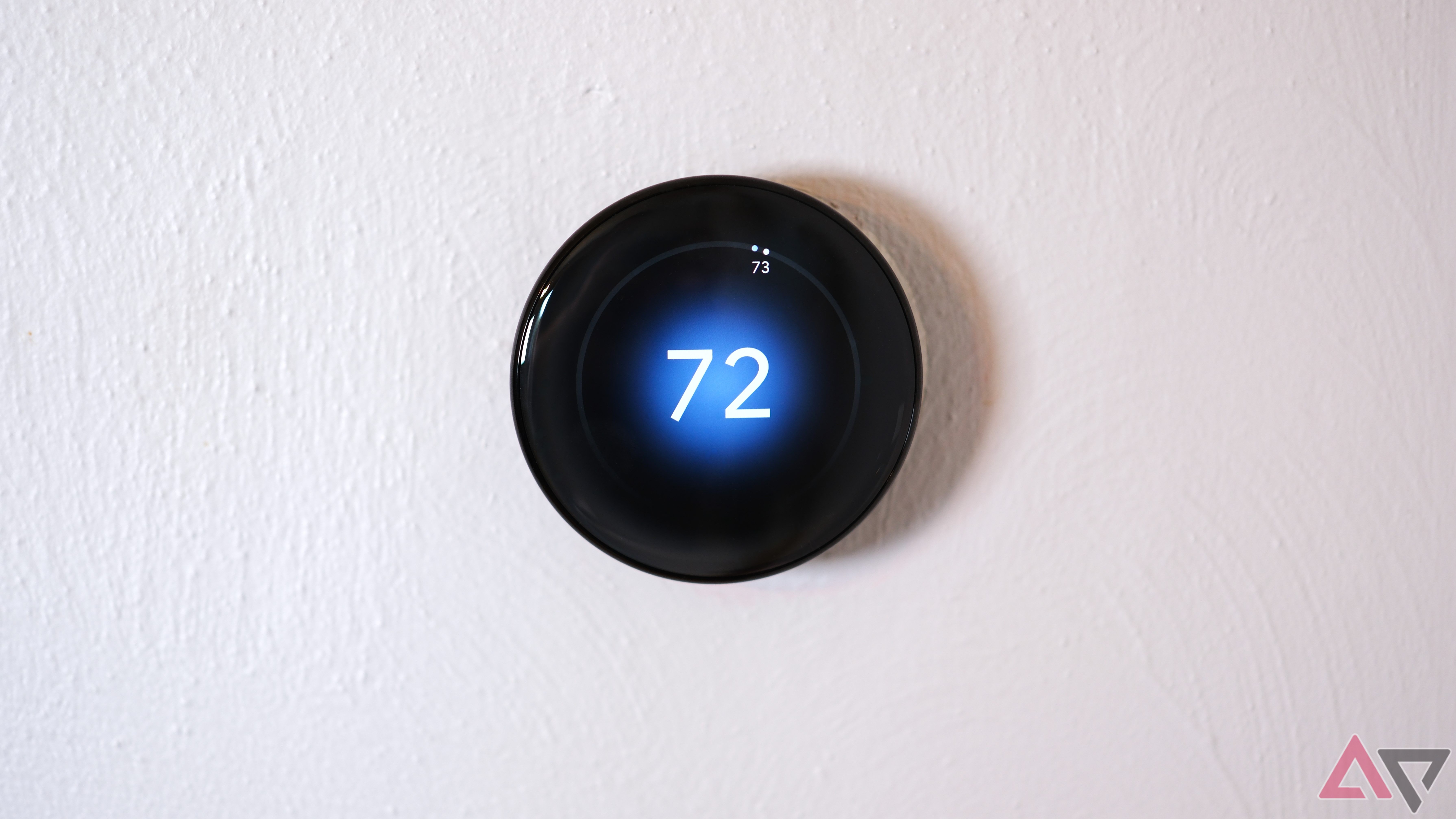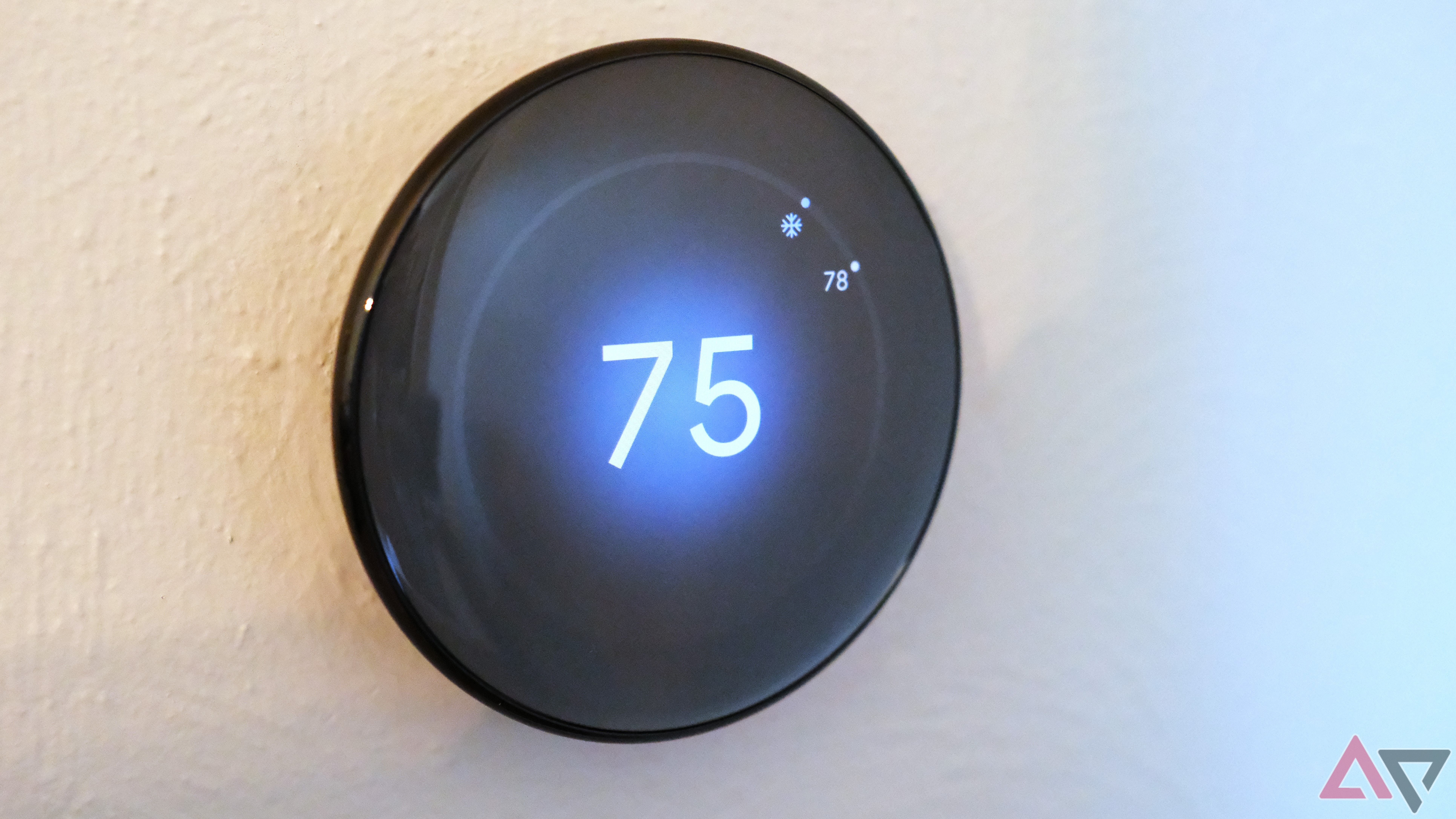Our homes are supposed to be a place of safety and comfort, where we can relax, be at peace, and explore our lives. But those things can be difficult to experience if the environment inside is too hot or too cold.
Thermostats are designed to allow us to dial in the exact temperature that feels good. Switching to a smart thermostat can make that easier. However, it’s the money-saving features that make my Nest Thermostat stand out as being more than a good-looking device on my wall.
Trusting the process
It’s about letting go
When Google released the latest Nest Thermostat (4th gen) in August 2024, it introduced a completely redesigned product. While it retained the round puck design, Google drew inspiration for the style from one of its other devices: the Pixel Watch.
This led to a glossy, curved glass wall-wart, but in a good way. It’s hard to argue that the latest Nest Thermostat doesn’t look good. However, it’s about more than that.
One of the long-standing calling cards of Google’s climate control device has been its ability to learn. It learns your patterns for when you are or are not home, the times when you change the temperature, outside weather conditions, and more.
The Nest Thermostat utilizes this data to optimize its operation, determining when to run and when not to. Not only that, it offers suggestions for saving energy and money.
Much of what the Nest Thermostat is capable of in terms of automating your home’s climate to save energy and money requires you to trust Google.
One of the best ways I’ve found to utilize the Nest Thermostat is by enabling Eco mode. Eco mode utilizes environmental information and occupancy data to intelligently adjust the temperature in your home, helping you save money and reduce energy usage.
There are three Eco modes for the Nest Thermostat (4th gen): Auto-Eco, Eco hold, and Adaptive Eco, which is the mode I use as it is the most effective for my home.
If trusting automated temperature settings isn’t enough or possible, another way I use the Nest Thermostat to save money is with the temperature sensor.
My thermostat is located in a hallway on the main floor of my ranch-style home, and I placed the remote temperature sensor in my bedroom. This helps cut back on energy and save money because, at night, I have my thermostat base use that sensor to set its temperature limit.
Instead of trying to get my entire home to a certain temperature, I tell the Nest Thermostat to use the sensor in my room at night.
Follow the data
It can be helpful
The Nest Thermostat collects a significant amount of information about the conditions in your home and how they are affected by you and the outside environment.
That data is used to help you save money and reduce energy usage. Google published a white paper report on its research findings.
While Google is generally good at determining the best way to utilize this information for your home, it may not always make the necessary climate adjustments in the way you want them.
You can access this information, allowing you to make adjustments that best suit you and your home. You’ll get a monthly report that shows how much energy was consumed by your home, how long your HVAC system ran, differences from the previous month, and more.
In addition to this report, you can view current data on your Nest Thermostat’s readings in the Google Home app on your energy dashboard or online.
My Nest Thermostat periodically makes suggestions to change when the air conditioner runs, the temperature adjustments, and others, to create savings. While I don’t accept all the suggestions, some I do as they aren’t ones I may not have come up with on my own.
I can use the data in the reports and in the dashboard to see how much I’ve saved, make proactive changes, and more. However, the automations are certainly helpful.
It’s worth it
It just takes time
Dumb thermostats allow you to set a temperature, and some let you set schedules. However, those are finite and don’t actively adjust based on what is happening inside and outside the home.
When you leave home with a dumb thermostat, your home’s HVAC continues to cool or heat it as if you were there, wasting money and energy. You could manually make the adjustments when you leave and come home, but that’s annoying, and you may forget.
Even this simple example is a good reason to consider a Nest Thermostat, as this one feature can save you a lot of money over time.
None of these savings are going to pop up overnight and take time. Not only to accumulate the savings, but also the information that your Nest Thermostat uses to start saving.
Using the home and away feature, enabling Eco mode, and using the included temperature sensor are just a few ways the Nest Thermostat saves me money. Still, there are many other reasons you should consider one for your home.
Google Nest Thermostat (4th gen)
$280
Save $76
- Brand
-
Google
- Integrations
-
Google Home, Matter
- Connectivity
-
Wi-Fi 802.11n (2.4 GHz / 5 GHz)
- Display
-
2.7 inch (68 mm) diameter circular liquid crystal display (600 x 600)
- Weight
-
5.7 oz
Google’s fourth-generation Nest Thermostat looks beautiful in whatever color you choose, but it’s the intelligence inside that helps it keep you comfy in your home and save you money while doing so.







